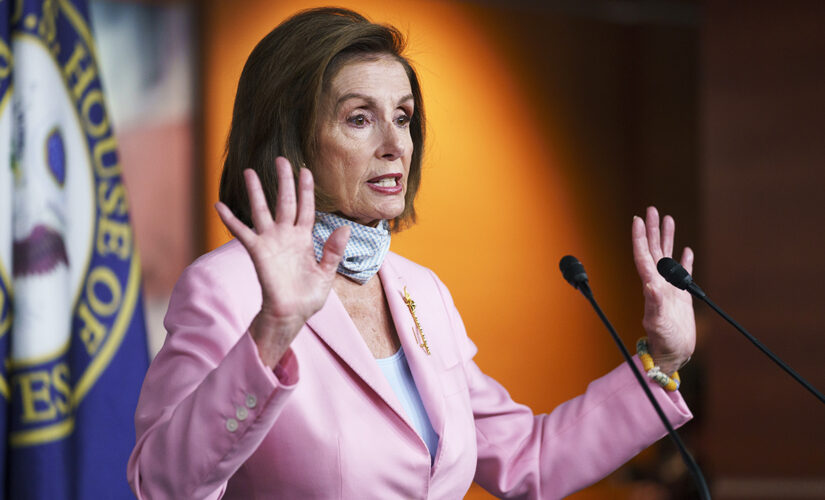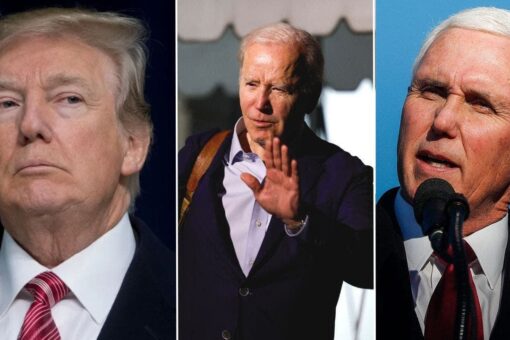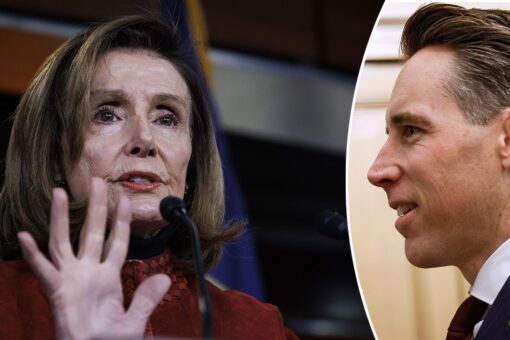NEWYou can now listen to Fox News articles!
It may be easier to figure out who in Washington hasn’t tested positive for COVID-19 in recent weeks.
A surge of coronavirus cases is seizing the U.S. Capitol like at no other point in the entire pandemic.
Now, to be clear, these aren’t serious cases in which someone is hospitalized or has to go to the emergency room. None of the House or Senate members who have contracted COVID in the recent wave have died — although late Rep. Ron Wright, R-Tex., passed after contracting COVID-19 early last year. Congressman-elect Luke Letlow, D-La., died form COVID complications in late 2020 — before he could even take office.
That said, the sheer number of COVID cases on Capitol Hill is eye-popping.
All told, at this writing, 135 members of the 117th Congress have tested positive.
Seventy-eight members have tested positive this calendar year.
The coronavirus caseload on Capitol Hill often matches — or even predicts — a wave in the general population. After all, we have “representative government” in the United States. And it seems that Congress has mostly aligned perfectly with the rest of the country as the pandemic endures peaks and valleys.
Such was the case when omicron struck late last year and the national COVID figures exploded. Congress witnessed a significant explosion of cases in December and January.
GOV. MURPHY DOESN’T RESPOND TO QUESTIONS ABOUT NJ GENDER IDENTITY LESSONS FOR 2ND GRADERS
Then cases began to diminish as omicron waned.
However, COVID cases on Capitol Hill recently soared, starting around March 1.
March 1 was the day of President Biden’s State of the Union speech at the Capitol. It was also the same day Washington, D.C., began to ease its own mandates. Under the Constitution, Congress makes its own rules. So none of the COVID protocols in the District of Columbia affected Congress. However, D.C.’s decision to back off restrictions made it easier for Congress to do the same.
President Joe Biden receives a fourth dose of the Pfizer/BioNTech Covid-19 vaccine in the South Court Auditorium on March 30, 2022 in Washington, D.C.
(Anna Moneymaker/Getty Images)
Unlike the 2021 Joint Address of Congress speech, which was limited in attendance, all lawmakers from the House and Senate could attend — so long as they showed a negative COVID test.
Lawmakers flooded the Capitol COVID testing station the day of the speech. Six members tested positive on March 1 alone. The most positive tests among members in one day by far. Two or three cases in any one day was the high watermark prior to March 1.
But then something else began to happen.
Immunity from the third shot (or first booster, if you will) began to naturally wane. That coincided with an uptick in cases as the BA.2 subvariant arrived on the scene. Meantime, all one needed to do was observe what was going on inside the halls of Congress.
Things were “getting back to normal.” Lawmakers from both sides hoped to present the optic that things are returning to normal. The problem is especially acute for Democrats. They run Washington now. And they campaigned on tamping down the pandemic.
Speaker of the House Nancy Pelosi, D-Calif., meets with reporters at the Capitol in Washington, Wednesday, Aug. 25, 2021.
(AP Photo/J. Scott Applewhite)
You’ll see fewer members, aides, journalists and police officers wearing masks at the Capitol. More members conduct their business in person. Schools began to go on spring break. The Capitol began to reopen to limited, scheduled tours — mostly for school groups. Each office was then allowed to bring an expanded group of tourists, constituents or visitors through the Capitol on a regular basis.
The Capitol isn’t throbbing with waves of tourists like it did in the pre-pandemic period. But it’s a little shocking to see so many visitors pulsing through the building after a two-year hiatus. Some of those numbers are up right now because school is out. It’s spring break. People have traveled to Washington to see the cherry blossoms or are on the road for Easter and Passover. But more people in the Capitol — non-socially distanced and most without masks — may contribute to higher COVID numbers.
That said, there are no moves — yet — to dial back a partial reopening of the Capitol, even as cases rise.
The numbers really started to spike around April 5. Since then, 18 have tested positive.
Plus, there’s a big focus now on the exclusive Gridiron Dinner in Washington, a swanky, closed-door affair where the city’s elite dine, hobnob and guffaw at skits that make light of inside the Beltway politics.
But the gala for Washington power brokers appears to have devolved into a white-tie, super-spreader for power brokers.
The cozy confab may have fueled a capital, coronavirus crush.
In an email to its members, the Gridiron says with 80 positive tests, “the connection between a new positive dinner and our dinner is certainly arguable, particularly for public officials who have had a full week of public events.”
Call this the “Tuxedo Variant?”
Commerce Secretary Gina Raimondo tested positive. House Speaker Nancy Pelosi, D-Calif., tested positive several days later — even though she didn’t attend the dinner. The speaker has now tested negative and was asymptomatic. In a tweet, Pelosi thanked “everyone for their good wishes, chocolate and chicken soup.”
Still, despite the congressional outbreak, there are no plans to dial back the reopening of the Capitol — yet. Word just came last week that lawmakers could resume special tours, winding through the innards of the Capitol Dome. Those have been off since the pandemic.
Still, there has been a sharp increase in mask use at the Capitol over the past few days.
ATTEMPTED REAGAN ASSASIN JOHN HINCKLEY BOOKS NYC CONCERT AHEAD OF UNCONDITIONAL RELEASE
Across the street from the Capitol, the Supreme Court remains shuttered to the public. It hasn’t been open to visitors since March of 2020.
The high court also announced that only justices, attorneys arguing the cases, court staff and a limited number of the press corps are permitted for oral arguments later this month.
So now the question is what does official Washington, do next?
The Gridiron Dinner was the second major social function in Washington since the pandemic canceled nearly everything two years ago. The Radio/TV Correspondents’ Association (RTCA) held its dinner in mid-March with more than 600 guests. A negative test was required for entry.
The RTCA tried to hold the dinner last fall and canceled. But it went off this time without any apparent outbreak of cases.
Commerce Secretary Gina Raimondo testifies before a Senate Appropriations Subcommittee on Commerce, Justice, Science, and Related Agencies hearing to examine expanding broadband access, focusing on the Department of Commerce broadband programs in the Infrastructure Investment and Jobs Act Feb. 1, 2022 in Washington, DC.
(Photo by Andrew Harnik – Pool/Getty Images)
Next up: the White Correspondents’ Dinner on April 30 — or “Nerd Prom.”
That dinner is four times the size of the Gridiron and RTCA dinners. Vaccines are now required for that shindig.
But this D.C. outbreak reveals a truth about COVID: It’s challenging to get completely back to normal with big, inside events. There are going to be positive tests. There are going to be outbreaks.
CLICK HERE TO GET THE FOX NEWS APP
The problem for Washington is that politics is a “contact sport.” Lawmakers need to visit with their constituents in their home districts and states. Lawmakers and administration officials not only like but need to be together with their colleagues. Not just for social occasions like the Gridiron Dinner — but hearings and meetings on legislation and policy.
The inherent risk of COVID hasn’t disappeared. Granted, no one is deathly sick like before vaccines and therapeutics. But this may be the new normal in Washington — and elsewhere — at least for a while.




